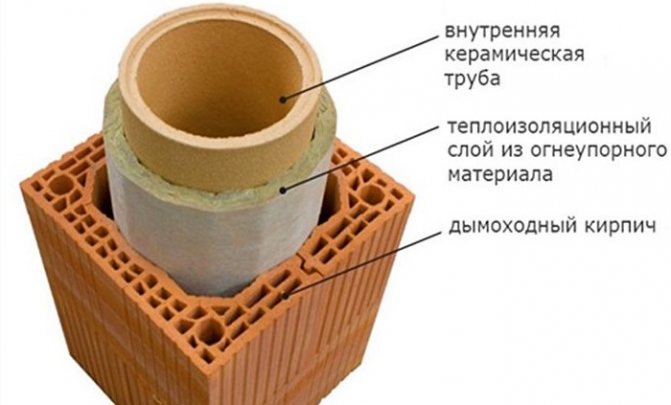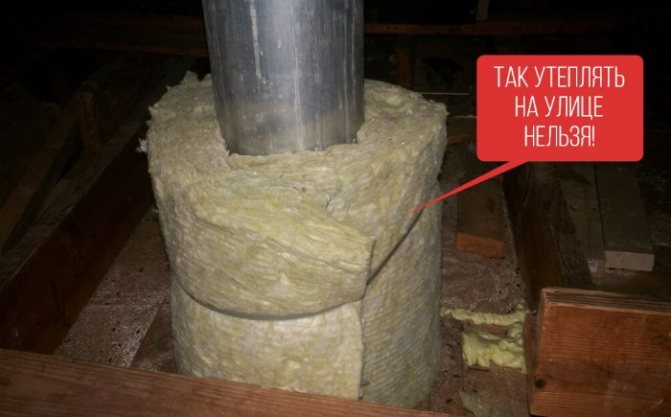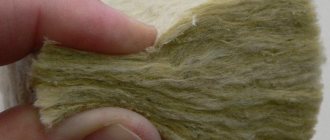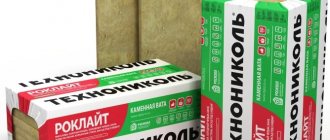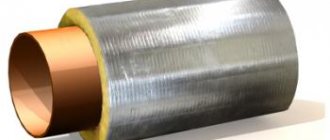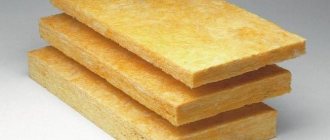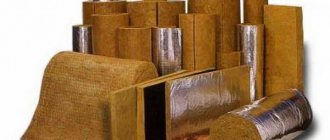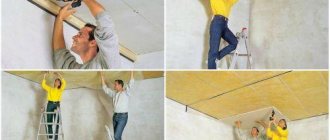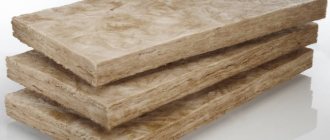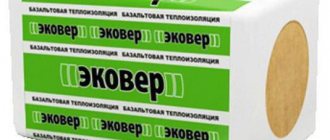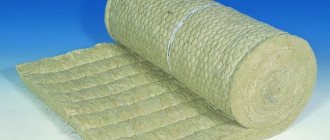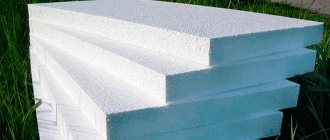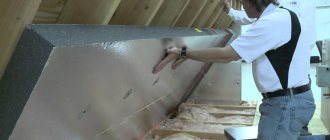Insulation is an indispensable element in the construction of any facility in temperate and cold latitudes. Room comfort and monthly heating costs depend on this. But when choosing a building material, you need to think not only about its basic functional characteristics, the fire resistance of the insulation is a vital parameter. The safety of people's lives and the safety of property largely depend on it. Today the market offers a large selection of heat insulators, and it is not difficult to choose a modification that meets all the requirements. Due to the growth of emergencies, it is better to initially choose non-combustible insulation.

Varieties
There are hundreds of types of thermal insulation materials on sale. They differ not only in their purpose - refractory insulation for the chimney, for the foundation, for the roof, but also in structure:
- Loose. These insulators are granules and pebbles of various fractions. Building materials are poured into the voids of building structures. Expanded clay, perlite and vermiculite are well known.
- Cellular. Foamed materials are widely used in housing construction. They have good performance parameters. For example, foam glass is extremely durable, and the declared resource is 100 years.
- Liquid. These heat insulators are applied to structures in liquid form. After solidification, they turn into a white mass, similar in appearance to polystyrene. A popular liquid heat insulator is PU foam urethane.
- Fibrous. Insulation consists of fibers, building materials are often called wool: stone, mineral, basalt. On the market they are offered in mats or rolls. Traditional solution with high fire resistance.


Basalt wool
Subtleties of installation
A fire-retardant layer of basalt wool is formed after thorough cleaning, degreasing the surface and then applying a refractory adhesive to it. The glue is applied using standard painting tools (brush and spatula).
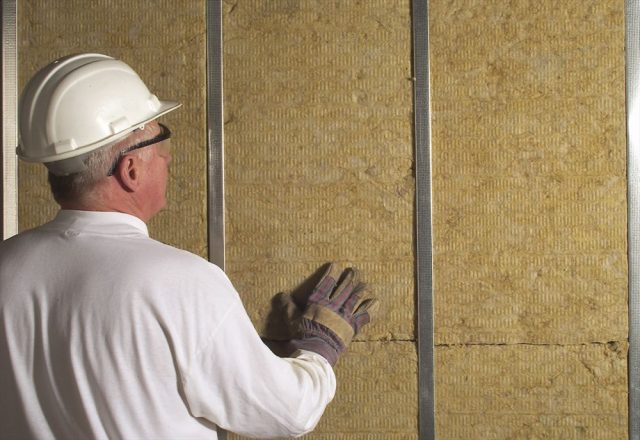

The material is cut using standard construction scissors or a sharp knife.
During all operations with basalt wool, precautions should be taken (protect your eyes with glasses, respiratory system with a mask, and hands with gloves).
After working with such dusty material, the used overalls are thrown away as they cannot be cleaned or washed. Immediately after applying the glue to the structural elements (until the adhesive has hardened), the web is installed.
The edges of the material at the joints formed during the installation process are fixed with aluminum tape. When cutting the canvases, provide a margin for overlap at the joints of at least 5 centimeters.
It is important to cover all fastening and elements enclosing the insulated area (pins and brackets) with a basalt sheet. This is the only way to guarantee the complete safety of the building. The air ducts do not need any subsequent finishing.
Of great importance is the quality control of the seams, the correct choice of materials: basalt fire-retardant cloth of sufficient thickness and glue with suitable characteristics. It is also necessary to correctly select the type of surface of the insulating material, each version of which differs in the parameters of thermal conductivity, sound insulation and density.
How to choose a fireproof refractory heat insulator?
Regardless of why you buy an insulator with fire resistance - for a balcony, door insulation, for a boiler, floor or pipe, you need to strive for the following parameters:
- Maximum thermal efficiency.The lower the coefficient of thermal conductivity, the more heat will remain in the premises.
- Reliability. The material should be designed for the specific structures of the house. Fire resistant chimney insulation should not be used for walls or floors. Insulators are designed for the application, including the loads.
- Life time. It is unlikely that the owner of the house will want to periodically carry out insulation work. It is better to complete the work once and live in a comfortable environment.
Attention! Any building material has advantages and disadvantages. When choosing, it is necessary not only to consider the technical characteristics of a particular heat insulator, but also to compare the modifications with each other.
Cotton wool as insulation
Any construction wool is characterized by high fire safety performance. Including ecowool and glass wool. These characteristics have nothing to do with vapor barrier, thermal insulation properties. They stably withstand temperatures up to +500 degrees C. All waddings have fire-resistant characteristics to a large extent. They do not support combustion, the flame, in contact with them, immediately extinguishes. Such properties make mineral wool one of the most demanded insulators, including for baths and saunas.
Advantages:
- exceptional fire resistance;
- low price;
- variety of release formats;
- environmental certificates.
Disadvantages:
- building material absorbs moisture well, dampness, loses its insulating properties;
- some modifications contain hazardous components.
Note! If the insulation satisfies the fire safety and thermal insulation project, but is extremely hygroscopic, this disadvantage is compensated for by technological solutions. In this case, it is necessary to provide for effective waterproofing and vapor barrier.
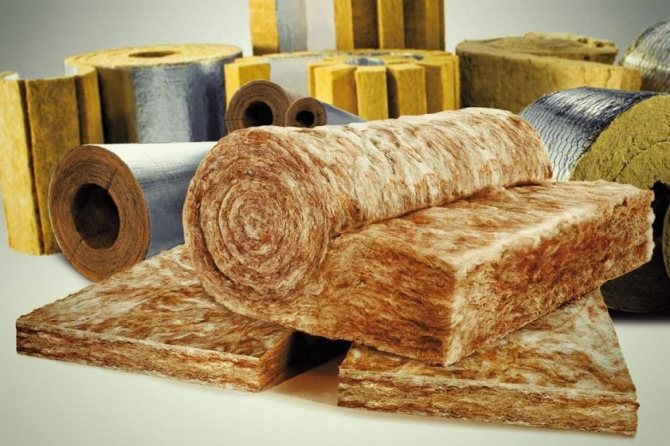

Mineral wool production formats
What is mineral stone wool
First, let us establish that the general term is "mineral wool insulation", according to the technical document GOST 52953-2008 "Heat-insulating materials and products. Terms and definitions "refers to three types of materials used as insulation - stone wool, slag wool and glass wool:"
3.17 mineral wool: Thermal insulation material with a wool structure and made from molten rock, slag or glass.
3.17.1 glass wool mineral wool made from glass wool
3.17.2 rock wool: Mineral wool made predominantly from the melt of igneous rocks (rock wool)
3.17.3 slag wool: Mineral wool made from melted blast furnace slag (slag wool) ".
Therefore, when a question arises before the customer: basalt insulation or mineral wool - which is better, clarification is required. Using the terms "mineral wool", as well as "mineral wool for wall insulation", we will talk mainly about stone wool.
For comparison, we present the technical characteristics of three types of mineral wool:
You can see that stone wool has the best performance in almost all parameters.
The origin of stone wool


Molten magma
The idea of producing thermal insulation materials from molten rocks arose back in the 19th century after observing the processes occurring during volcanic eruptions, when thin filaments were formed from splashes of hot magma under the influence of the wind. Such insulation as stone wool as a building material was first obtained from the waste products of metallurgy - blast furnace slag - at the turn of the 19th and 20th centuries, first in the United States, and then in Great Britain and Germany. However, these first experiments were not widely used on an industrial scale due to imperfect technologies.
The greatest success in the development of production methods and high quality materials was achieved in the 30s of the XX century by specialists from a Danish company, which for the first time produced mineral wool boards for thermal insulation of building structures and began to be called according to the main type of the produced product Rockwool (literally "stone wool"). Since then, Rockwool has been producing basalt slabs for thermal insulation of various types, constantly expanding the range of manufactured materials and today has become one of the leaders among the world's best manufacturers of thermal insulation based on basalt wool.
In Russia, the products of TechnoNICOL are very popular, a generally recognized domestic manufacturer of various building materials, which produces thermal insulation boards made of mineral wool, which are in no way inferior in quality and range to Rockwool materials, so here we will consider in detail the production technology, varieties, properties and scope of TechnoNICOL stone wool.
Liquid fire retardant heaters
These synthetic building materials are characterized by high thermal insulation parameters. Among them, there are many modifications that are non-flammable and ecologically perfect. For example, polyurethane. Liquid fillers fill the smallest gaps, completely preventing cold from entering the premises.
Advantages:
- efficiency;
- environmental Safety;
- fire resistance;
- filling density.
Disadvantages:
- application requires special equipment and skills;
- high price.
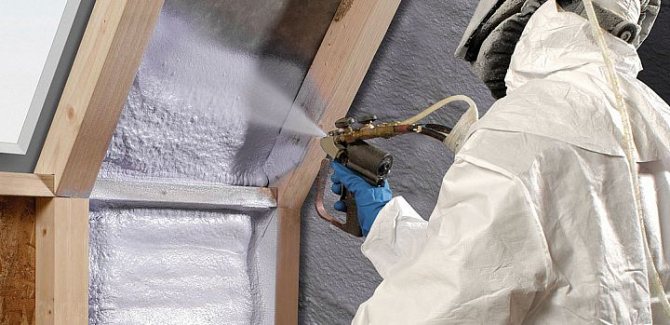

Liquid polyurethane application
Loose heaters for walls, ceilings and floors
Each free-flowing non-combustible insulation for walls and ceilings has its own thermal conductivity parameters. When using, you need to accurately calculate the thickness of the backfill. This method of insulation is difficult, both in the development of the project and in execution. Building materials vary in environmental safety, some release toxic substances when heated. But all of them are ideally non-flammable and fireproof.
Advantages:
- good thermal insulation parameters;
- does not attract animals;
- fire resistance;
- low cost.
Disadvantages:
- require accurate calculations and site preparation;
- some modifications emit hazardous substances at high temperatures.
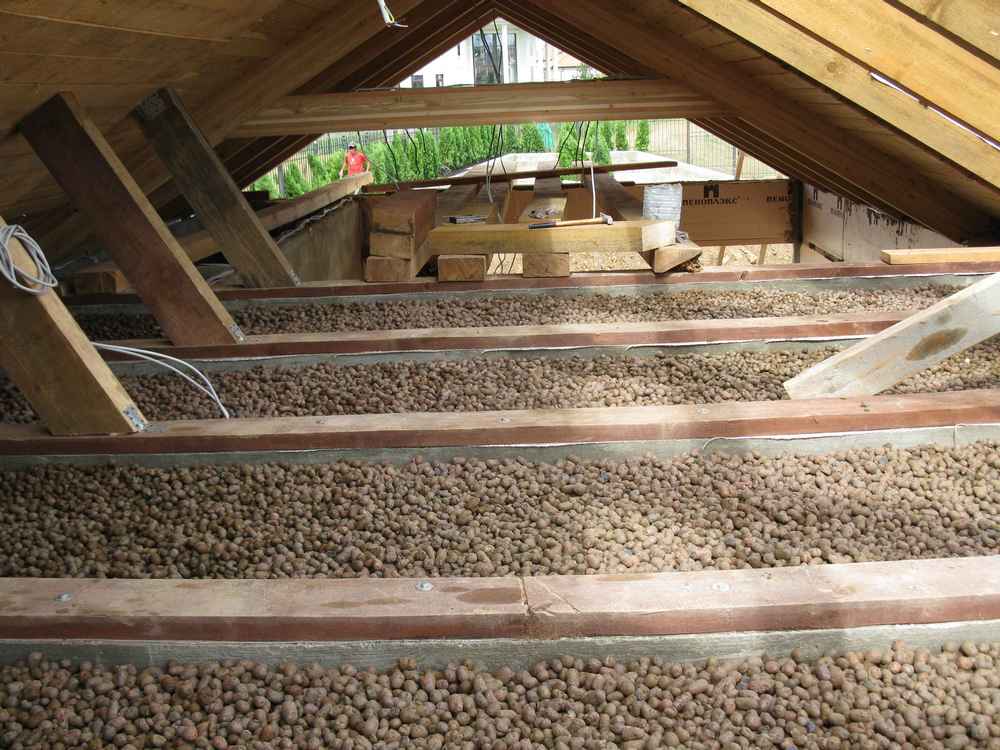

Insulation of the ceiling with expanded clay
Advantages and disadvantages of the material
The advantages of using basalt fiber materials are determined by their properties, including:
- incombustibility (high melting point - 1114 degrees);
- absence of harmful fumes and smoke when heated to critical temperatures (basalt is a natural stone, and phenol-formaldehyde resin in certified materials is neutralized at the production stage or is not used at all);
- vapor permeability (0.3 - 0.6 mg / m * h * Pa);
- hydrophobicity (basalt insulation does not absorb moisture from the air);
- no shrinkage;
- vibration resistance;
- a wide range of density, increasing the range of applications for fire retardant material;
- resistance to acid-base environments;
- high strength (slabs with a strength of 80 kPa are produced, their deformation during compression does not exceed 10%, such material can be used for insulation from the outside of operated flat roofs);
- good soundproofing (due to the soft fibrous structure of basalt fiber wool);
- excellent thermal insulation (from 0.034 to 0.048 W / m * C);
- low own weight and thickness (basalt insulation does not burden the protected structures).
Some advantages, under certain conditions, look like disadvantages. For example, construction according to European standards is carried out from vapor-proof materials.And for wooden architecture, brick construction, foam and aerated concrete, on the contrary, it is important that the vapor permeability of the insulation is higher than the same indicator of the walls.
In addition, hydrophobicity only applies to moisture in the air. If water gets on the surface of the basalt wool, it will be successfully absorbed.
The same goes for condensation. Therefore, if there is a likelihood of a dew point, the basalt insulation must be insulated from the side of the wall with a vapor barrier film.
The disadvantages also include high dustiness during work, poor adhesion to the adhesive and the need to use expensive vapor-permeable paints. In addition, formaldehyde fumes should be expected when using cheap material modifications.
Porous insulators with fire resistance parameters
This is the latest generation of fireproof building insulation. Mostly, materials are made from natural raw materials: glass, coal and other components. They consist of up to 80% of voids. Insulation materials do not support combustion, do not emit toxic substances, can be easily cut, suitable for insulating any external and internal structures, including chimneys.
Advantages:
- high thermal insulation characteristics;
- fire resistance;
- low price;
- environmental Safety.
This building material has no shortcomings.


Foam glass production formats
The choice of refractory insulation is an urgent task for many potential owners of country houses. Watch the tests of thermal insulation materials for incombustibility in this video:
Areas of application of refractory heaters
Non-combustible heat insulators are used at all facilities, including those with high fire safety requirements. They are used on the upper structures of structures: attics, attics, roofs, they are used at facilities with extreme operating conditions: baths, saunas, workshops for the production of hot products, for example, in a bakery. Despite the emergence of new technological materials, traditional insulation materials are widely used. Such as glass wool, expanded clay, brick breakage are still in demand in construction. Modern heat insulators solve problems at the same time, including vapor barrier. Therefore, when choosing, you should be guided by the recommendations of industry experts.
On a note! All chimneys, regardless of the material - brick, metal, asbestos pipe - are subject to negative influences. That is, any system requires a heat insulator. The choice of insulation depends on the design and material features.
Foil insulators are increasingly being chosen for the construction of baths and saunas. They are lined with walls, floor, ceiling, chimneys. More often this material is sold in rolls. The advantages of this heat insulator are that the foil is characterized by additional properties - to reflect infrared rays. This provides additional heat resistance. The insulation is easily cut and laid, protects the premises from freezing as much as possible at a time when saunas and baths are not used or heated.
Insulation of the chimney pipe with basalt wool
The technology and mechanism for installing the cladding is influenced by many factors, including the material from which the pipe is made, its diameter and others.
Basic rules for high-quality thermal insulation
Compliance with the following standards is mandatory when sheathing the chimney with a heat insulator:
- for a wooden covering, the layer of wool should be at least 50mm and not more than 100mm;
- in passages through a tree, this layer must reach at least 5 cm;
- if the mats of the material are stacked in several layers, then their joints must be covered with upper layers;
- for heat insulators in a cylindrical form of release, when they are applied in several layers, each subsequent layer must be stacked with an offset of 180 °;
- for boilers with liquid fuel or gas heating technology, it is advisable to use high-temperature materials for sheathing with a range of up to 300 o;
- a protective screen is a mandatory measure of insulation if materials without a foil layer were used during the work.
Insulation of a ceramic or asbestos chimney
For asbestos chimneys, the outer sheathing procedure is carried out, and the layers of material are fixed with special brackets. To simplify and speed up the work, you can use basalt cylinders, the thickness of which should not exceed 5 cm.
Important! You will also need an additional installation of an external steel casing (the best option is stainless steel or galvanized materials), and insulate the upper end of the chimney with a cement mortar.
Methods for insulating a steel chimney
The mechanism of the procedure is almost completely similar to that for a ceramic chimney, and looks like this:
- Two pipes of different diameters are used: a large one for the outer surface, and a smaller one for interior decoration.
- One pipe is inserted into the other.
- The resulting gap between the products is filled with the selected non-combustible insulation to insulate the chimney.
- If the material has a foil layer, it is not necessary to install a protective cover.
- The end structure must be additionally insulated.
The instruction itself is quite simple, but it can also be simplified by using ready-made sandwich pipes that replace the first 3 points of the guide. Such ready-made consumables for insulation have high temperature resistance and help to achieve high insulating characteristics.
Brick pipe insulation technology
Insulating a brick pipe is not an easy task.
To carry out the procedure, 2 methods are used:
- plastering;
- sheathing with mineral wool.
To plaster a pipe you need:
- a special reinforced mesh is installed on its outer surface;
- the first layer is applied directly to it in a small amount;
- after drying, a thicker mixture is made and laid on a mesh in several layers;
- to achieve an aesthetic appearance, after drying, the substance is rubbed, leveled, whitened or painted over with paint.
For the second method - cladding - use basalt wool in rolls or mats:
- the required amount of material is cut depending on the size of the surface to be insulated.
- the resulting layers of material are attached to the chimney with dense tape.
- a protective casing made of bricks or slabs (optional) is mounted on top of the cotton wool.
- to obtain the desired appearance, the surface can be plastered or painted.
Basalt wool is the best option for insulating chimneys. It can be used for any premises: residential and industrial. It also has the characteristics necessary for these purposes - it is fireproof, resistant to moisture and vibrations, easy tolerance to high and low temperatures.
Let's summarize
Because, how good the insulation will be, the fire safety of the building depends. It is better to choose products of well-known brands, they exactly correspond to the declared characteristics. Heat insulators of such brands as Rockwool, Rocklight, Technonikol, Isover and Ursa are in demand. These modifications can be bought at low prices in the Leroy Merlin chain stores, Your Home and other retailers. And it is better to entrust the calculations to technologists and engineers who will take into account areas, wall materials, layout and other aspects. As a result, you will live in a comfortable and safe home.



